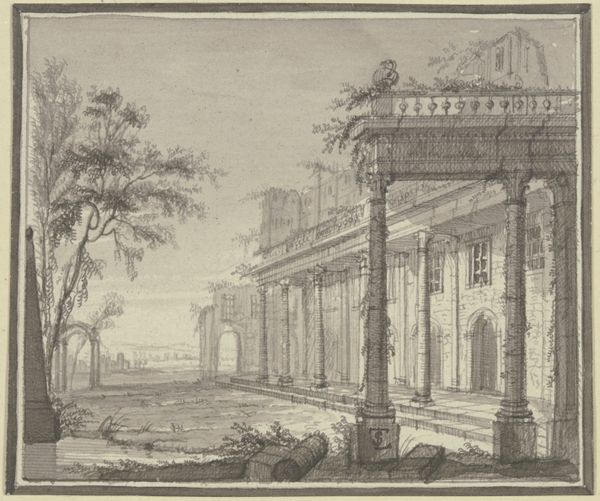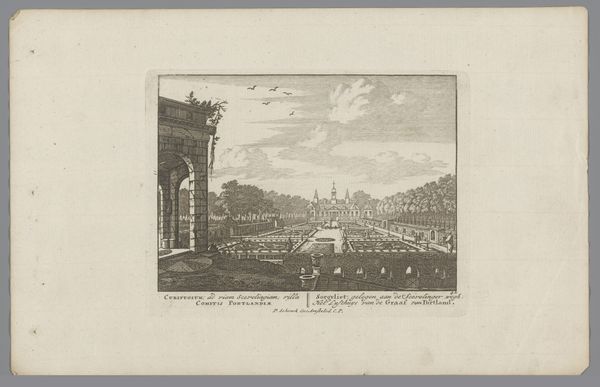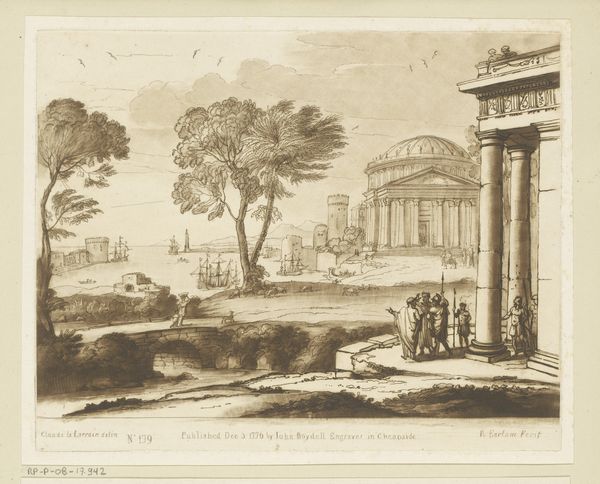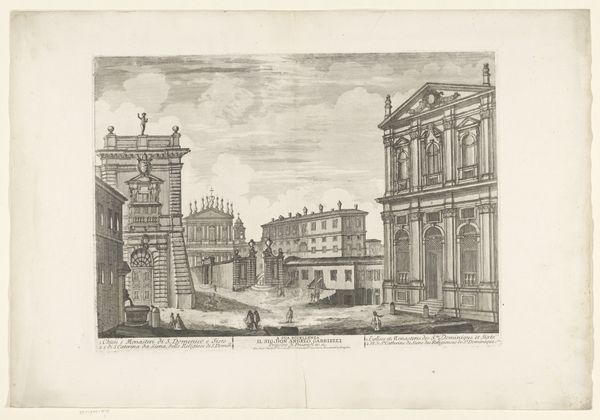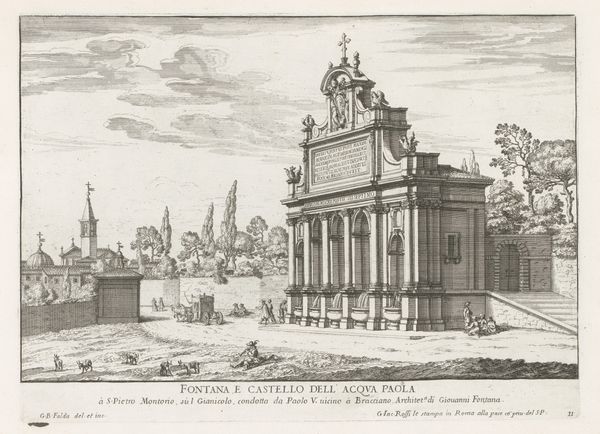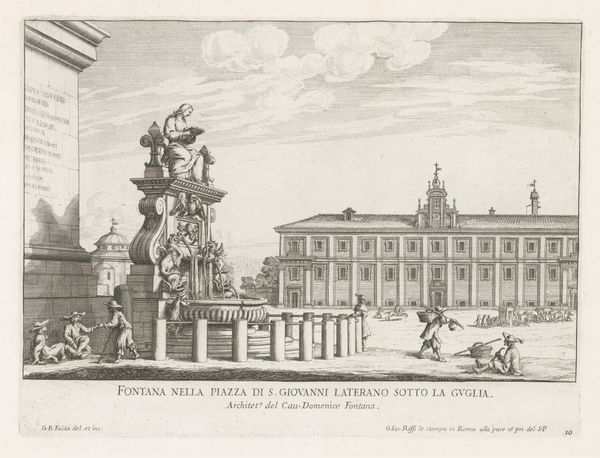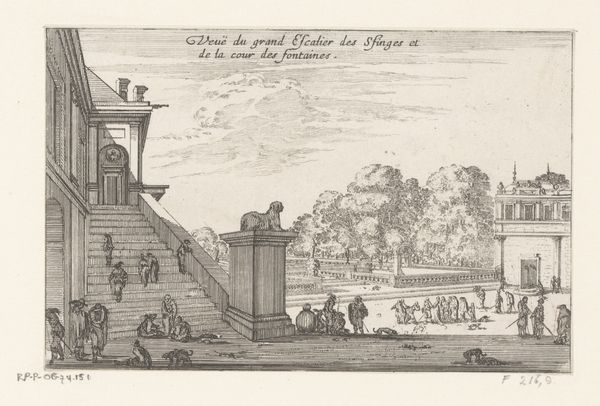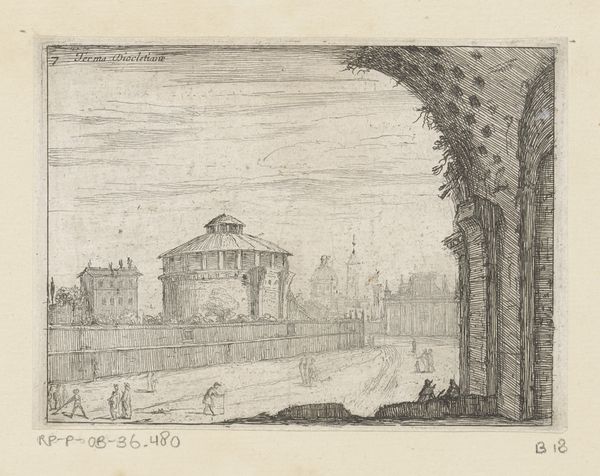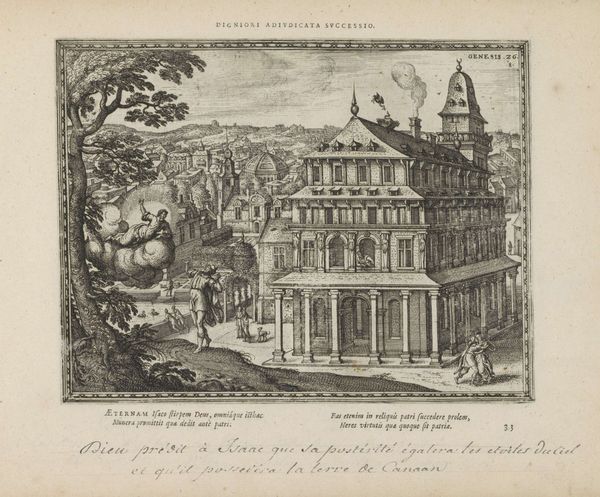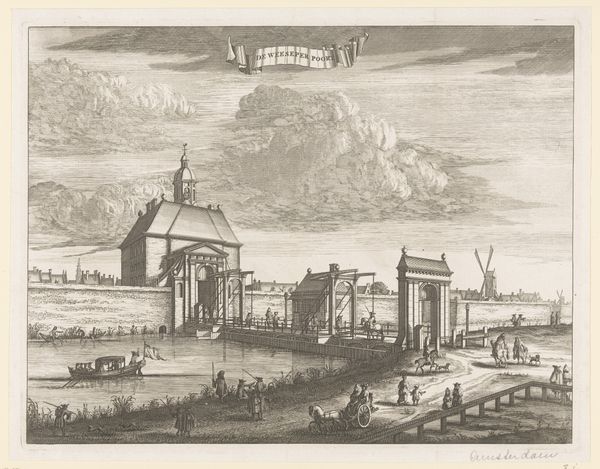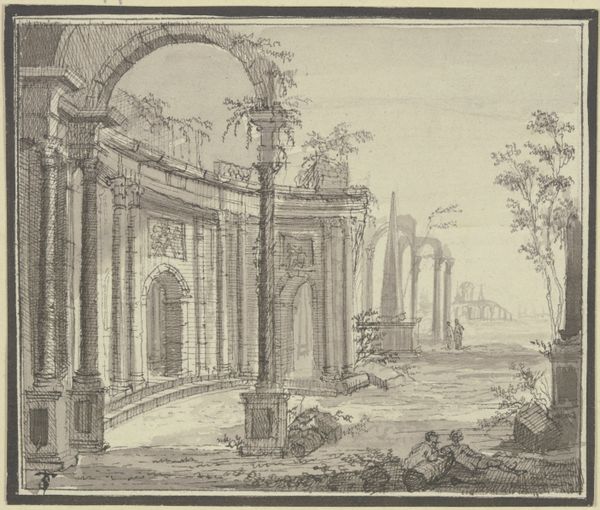
print, engraving
#
baroque
# print
#
landscape
#
cityscape
#
engraving
Dimensions: height 94 mm, width 187 mm
Copyright: Rijks Museum: Open Domain
Editor: This is "View of the Château de Tanlay with Gardens" by Israel Silvestre, made sometime between 1631 and 1661. It's an engraving. I’m struck by the almost manufactured appearance of nature, and the precise lines in the architecture. How would you interpret this work? Curator: As a materialist, I'm most interested in how this print embodies the political and economic power of the elite in 17th-century France. Consider the laborious process of creating an engraving like this. It was skilled work, demanding both artistry and technical knowledge, a carefully manufactured image created for a consuming audience. Editor: So you see it as less about the castle itself, and more about the system that produced it? Curator: Precisely. Silvestre is not simply depicting a beautiful scene. The very act of creating this reproducible image highlights the burgeoning print culture and the means by which images, and consequently power, circulated in early modern Europe. The château is a site of production and consumption, a nexus of material and social relations. Look at the meticulous rendering, and the implied labor of managing the grounds, constructing this idealised nature. Editor: That's interesting. I hadn't considered the act of engraving itself as part of the message. Curator: And look at who benefits from this image. This wasn’t mass-produced. The elite bought these prints, circulating this aesthetic amongst themselves, further reinforcing their status. The material – the print itself – and the social practices it enables become as significant as the depicted image. Editor: That really shifts my perspective. I'm starting to see how even a seemingly simple landscape print is loaded with information about the economy and social hierarchy of the time. Thanks for pointing that out!
Comments
No comments
Be the first to comment and join the conversation on the ultimate creative platform.
